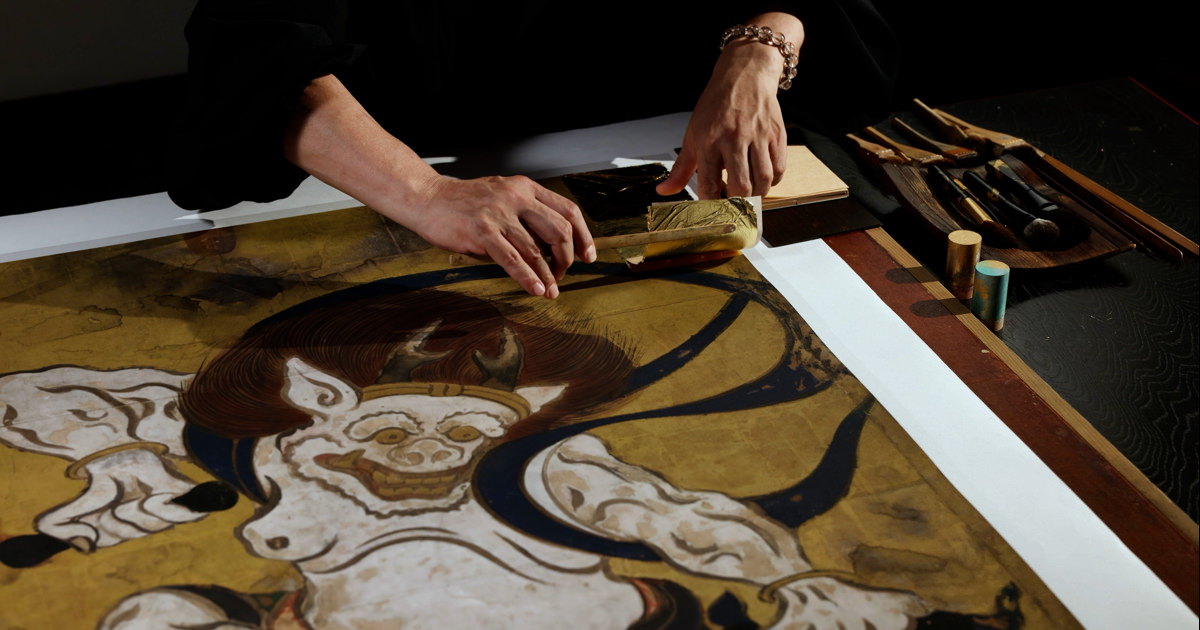Namban Screens
High-resolution facsimiles
- Material
- printed, gold on washi paper
- Period of creation
- Tsuzuri Project Stage 2 2008–2009
- Recipient
- Kobe City Museum
Original
- Cultural property designation
- Important Cultural Property
- Artist
- Kano Naizen
- Historical era
- Azuchi-Momoyama (16th to 17th century)
- Material
- ink, color and gold on washi paper
- Medium
- Pair of six-fold screens
- Size
- Each screen H154.5 × W363.2 cm
- Collection
- Kobe City Museum
Description
Kano Naizen was the son of a vassal to Araki Murashige, lord of the Itami castle at Settsu, who was later overthrown by Oda Nobunaga. Kano became an apprentice painter under Shoei Kano, and eventually became the imperial house painter of the Toyotomi family. Namban (Barbarians from the South) screens were painted quite frequently during the period of Momoyama and Edo. This work is one of the best masterpieces of that time. The right screen (shown below) shows traded goods being unloaded on Japanese shores, and the Captain General proceeding through a merchant district toward a Christian temple. The screen on the left shows ships leaving port against an exotic backdrop that appears to go beyond imagination.




